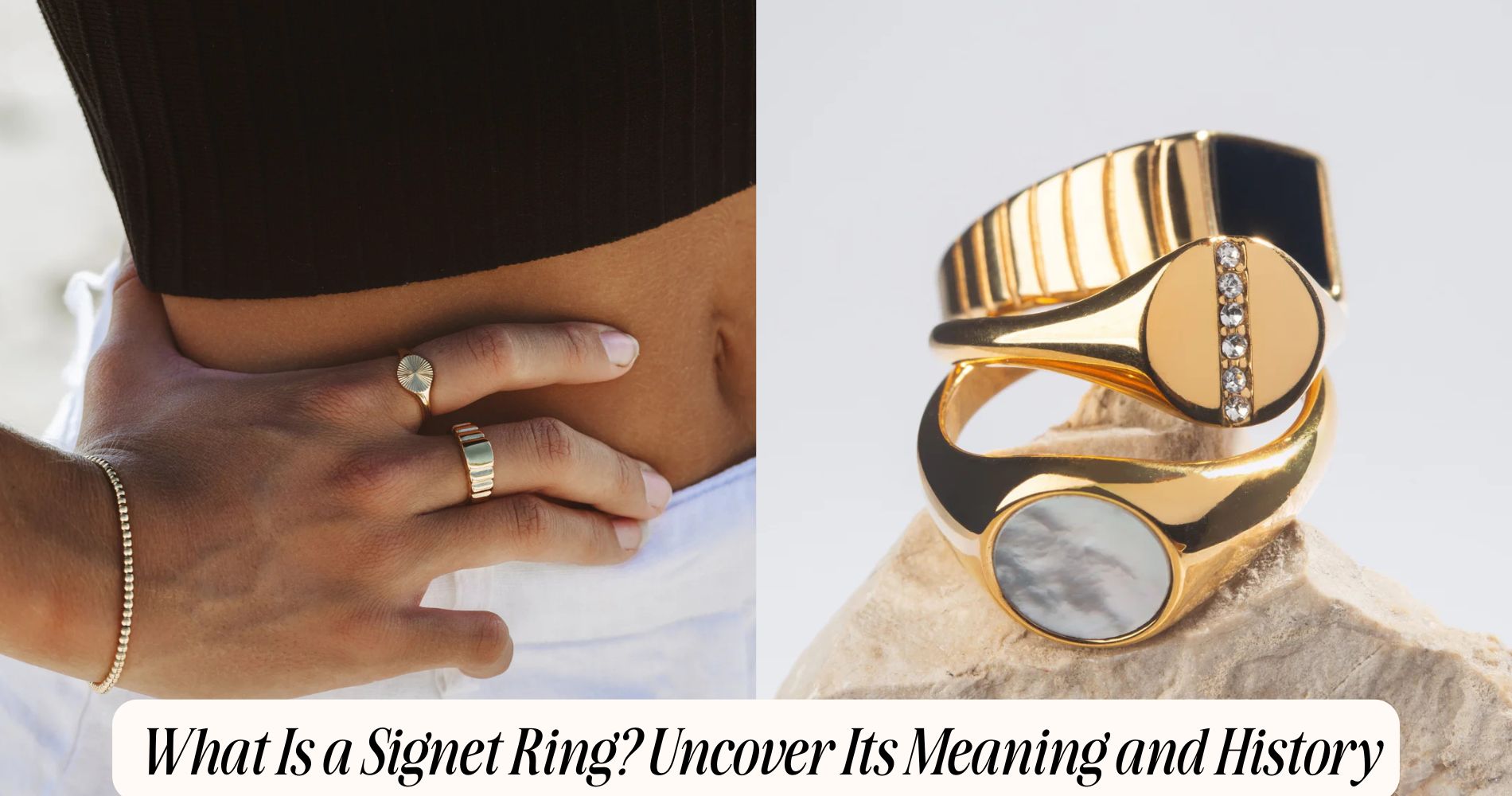
What Is a Signet Ring? Uncover Its Meaning and History
What is a Signet Ring? A signet ring isn't just a piece of jewelry; it's a historical artifact with deep cultural roots. Originating from ancient civilizations like Egypt and Greece, signet rings served as personal seals for authenticating important documents. Traditionally worn on the pinky finger, they symbolize lineage and identity, often featuring intricate engravings or family crests. These rings, crafted from precious metals, marry tradition with personal expression. Today, signet rings have evolved, and modern collections—such as waterproof rings—showcase their timeless appeal and versatility, making them a lasting emblem of heritage and artistry.
Definition of a Signet Ring
A signet ring is a type of jewelry that carries significant historical and cultural weight, serving primarily as a personalized seal. Typically worn on the little finger or thumb, these rings often feature a flat surface engraved with a design or initials, which could be pressed into wax to authenticate documents.
You'll find various types of signet rings, including traditional family crest designs and modern variations that appeal to personal tastes.
Famous signet users throughout history, such as kings, nobles, and influential figures, utilized these rings not just for personal adornment but as symbols of power and identity. For instance, the iconic signet ring of William the Conqueror bore his emblem, allowing him to assert authority across his domain.
In contemporary times, while the practical use of signet rings may have diminished, their significance remains intact. Many people wear them as heirlooms or fashion statements, connecting themselves to a lineage of historical importance.
Whether crafted in gold, silver, or other materials, each signet ring tells a unique story, encapsulating the essence of the wearer's identity and heritage.
Historical Origins
The signet ring's origins trace back to ancient civilizations, where it served both practical and symbolic functions. You'll find that these rings were often crafted by skilled artisans, showcasing ancient craftsmanship that combined artistry with utility.
In Egypt, Mesopotamia, and Greece, signet rings were essential tools for sealing documents and asserting authority. By pressing the engraved surface into clay or wax, individuals left a distinctive mark, ensuring authenticity and preventing tampering.
As cultures evolved, the signet ring became synonymous with status and power. Royal endorsements were common, as monarchs and nobles donned these rings to signify their lineage and authority. The unique designs often reflected family crests or emblems, reinforcing the connection between the wearer and their heritage.
In Rome, the use of signet rings expanded, symbolizing legal power and ownership. Roman citizens often wore them to signify contracts and agreements, emphasizing their importance in administration and commerce.
Consequently, the signet ring transformed over time, blending practicality with the weight of tradition, making it not just an accessory, but a powerful symbol of identity and authority throughout history.
Symbolism and Meaning
When you think about signet rings, their historical significance often reflects a blend of power and personal identity.
These rings not only symbolize heritage and lineage but also adapt to modern trends, revealing how they can represent individual style today.
Understanding this symbolism helps you appreciate their enduring relevance across cultures and generations.
Historical Significance of Signet Rings
Throughout history, signet rings have consistently served as powerful symbols of authority and identity. These rings weren't merely decorative; they were practical tools for sealing important documents, indicating authenticity, and asserting ownership. In ancient civilizations, such as Egypt and Mesopotamia, signet rings often featured intricate designs that reflected the wearer's status and lineage.
Cultural variations in signet rings highlight their diverse meanings across different societies. For instance, in medieval Europe, they conveyed nobility and were often adorned with family crests. In contrast, in Eastern cultures, signet rings could embody spiritual beliefs, with symbols representing protection or prosperity.
Artistic interpretations of signet rings have evolved over time, revealing shifts in societal values. The craftsmanship involved in creating these rings often showcased the skill of artisans, making them coveted items.
The motifs and materials used tell stories about the era and the individual, encapsulating a blend of personal and cultural significance.
Ultimately, the historical significance of signet rings lies in their dual role as both functional objects and potent symbols, bridging personal identity with broader cultural narratives throughout the ages.
Personal Identity and Heritage
Signet rings serve as profound emblems of personal identity and heritage, encapsulating the essence of one's lineage and values. When you wear a signet ring, you're not just adorning yourself with a piece of jewelry; you're making a statement about who you're and where you come from. The intricate designs often represent family crests or symbols that hold deep cultural significance, connecting you to generations past.
These rings offer a unique avenue for personal expression, allowing you to showcase your individuality while simultaneously honoring your heritage. By choosing specific motifs or gemstones, you reflect your personal beliefs, achievements, or aspirations. This duality of purpose highlights the ring's role as both a family heirloom and a contemporary accessory.
Moreover, signet rings foster a sense of belonging. When you wear one, you embody the values and traditions of your ancestors, reinforcing familial bonds and cultural ties.
In today's world, where identity can feel fragmented, a signet ring serves as a tangible reminder of your roots, empowering you to embrace your uniqueness while cherishing your heritage. This rich interplay between identity and culture elevates the signet ring beyond mere adornment.
Modern Usage and Trends
As personal identity and heritage evolve, so too does the role of signet rings in contemporary fashion and culture. Today, these rings serve as powerful fashion statements, blending tradition with modern design sensibilities. You'll find that many individuals wear signet rings not just for their historical significance, but also as a means of self-expression.
The contemporary signet ring often features unique engravings, gemstones, or personalized designs, reflecting your individuality and values. This shift highlights the cultural significance of these rings, transforming them from symbols of aristocracy and lineage into accessible, democratic pieces of jewelry.
Moreover, signet rings are making a resurgence in various subcultures, from fashion-forward millennials to luxury aficionados. You may notice them being worn by celebrities and influencers, further solidifying their status as a trend. In this scenario, they can symbolize rebellion against conventional norms or a connection to one's heritage, demonstrating how the signet ring continues to adapt and resonate in today's society.
Ultimately, the modern signet ring encapsulates a blend of personal narrative and broader cultural themes, making it a compelling choice for those seeking both style and meaning.
Materials and Designs
When it comes to materials and designs, the variety found in signet rings reflects both personal taste and cultural significance. Traditionally, signet rings are crafted from precious metals like gold, silver, and platinum, often chosen for their durability and status. Each material not only influences the ring's appearance but also its symbolic weight. For instance, a gold signet ring may convey a sense of luxury, while silver might suggest a more understated elegance.
Gemstone options further diversify the aesthetic appeal. Sapphires, rubies, and onyx are popular choices, each adding a unique character and color to the design. These stones can enhance the ring's overall meaning, linking it to personal stories or family heritage.
Engraving techniques play an essential role in defining the ring's identity. Whether you opt for intricate designs or simple initials, the engraving can reflect your personality and values.
Traditional methods like hand engraving provide a vintage charm, while modern laser techniques offer precision and detail. Ultimately, the materials and designs of a signet ring become a canvas for self-expression, encapsulating both history and individual narrative in a single piece of jewelry.
Signet Rings in Royalty
Signet rings have long served as powerful symbols of authority and identity within monarchies, marking the distinction of royal lineage.
You can trace their historical significance back to ancient times, where they were used to seal important documents and legitimize decrees.
Historical Significance in Monarchies
Throughout history, monarchies have wielded power not just through military might or wealth, but also by employing symbols of authority, with signet rings playing a crucial role.
These rings served as a tangible representation of royal lineage, signifying the legitimacy and continuity of a ruling family. When a monarch pressed their signet ring into wax, it not only authenticated documents but also conveyed the royal seal of approval, showcasing the unique identity of the sovereign.
The craftsmanship of signet rings often reflected the status of the wearer, featuring intricate designs that included family crests or emblems. This attention to detail emphasized the importance of heritage and the responsibility of leadership. For you, understanding the historical significance of these rings reveals how monarchs utilized them as instruments of governance and power.
Moreover, signet rings were often passed down through generations, reinforcing the connection between past, present, and future rulers. In this way, they became more than mere jewelry—they evolved into crucial artifacts that encapsulated the very essence of authority and responsibility within monarchies.
Consequently, signet rings were indispensable in the elaborate tapestry of royal legacy.
Symbols of Authority and Identity
The use of signet rings as symbols of authority and identity in royal contexts underscores their profound significance beyond mere ornamentation. These rings, often featuring intricate designs, served as personal seals for monarchs, effectively representing their power in legal and diplomatic matters.
When you examine various design variations, you'll notice that each ring reflects the cultural significance of the royal lineage it belongs to. For instance, some rings showcase family crests or emblems, while others may incorporate precious stones unique to a particular dynasty.
In addition to their practical functions, signet rings also embody the ideals and values of the ruling class. By wearing these rings, royals not only asserted their identity but also reinforced their status within society, creating a visual connection to their heritage.
The act of sealing documents with a signet ring served as a public declaration of authority, solidifying the monarch's position in the eyes of their subjects.
Ultimately, signet rings in royalty encapsulate a rich tapestry of cultural heritage, authority, and identity, showcasing how these elegant pieces of jewelry have transcended time to remain symbols of power and lineage.
Modern Uses and Trends
Today, many individuals are rediscovering the signet ring as a versatile piece of jewelry that transcends its historical roots. In modern fashion, these rings have evolved into powerful fashion statements, often worn by both men and women to express personal style and individuality.
You might notice them adorned with intricate designs or symbols that resonate with the wearer's identity, making them perfect for showcasing unique aesthetics.
Personalized engraving plays a significant role in the contemporary appeal of signet rings. Many opt for initials, meaningful dates, or even custom motifs that reflect personal narratives. This trend allows you to turn the ring into a cherished heirloom, enhancing its sentimental value.
Moreover, the resurgence of vintage and artisanal jewelry has propelled signet rings back into the spotlight. As people seek authenticity and craftsmanship, these rings offer a timeless elegance that mass-produced jewelry often lacks.
Whether worn casually or for formal occasions, the signet ring serves as a bridge between tradition and modernity, allowing you to honor history while making a statement that's distinctly your own.
How to Choose One
When considering a signet ring, it's essential to reflect on both aesthetic and practical factors to guarantee you select a piece that truly resonates with you.
Start with design considerations—think about the metal type, whether it's gold, silver, or perhaps a modern alternative like titanium. Each metal offers a different look and feel, influencing the overall aesthetic. Consider the shape of the ring and the style of the engraving; traditional oval shapes often convey classic elegance, while other shapes can provide a contemporary twist.
Next, explore personalization options. Signet rings often serve as a canvas for individuality, allowing you to engrave initials, family crests, or unique symbols. Evaluate what personal meaning you want to encapsulate in your ring. This can transform a simple accessory into a treasured heirloom.
Additionally, think about how you plan to wear the ring. Will it be an everyday piece or reserved for special occasions? This decision can guide your choice regarding durability and design complexity.
Care and Maintenance
Maintaining the beauty and integrity of your signet ring involves regular care and attention. Over time, dirt and oils can accumulate on its surface, dulling its shine. You can employ simple cleaning techniques to restore its luster. Use a soft, lint-free cloth to gently buff the ring, and for deeper cleaning, a solution of warm water and mild soap works wonders.
Avoid harsh chemicals, as they can damage the metal and any gemstones.
When it comes to storage solutions, keep your signet ring in a dedicated jewelry box or a soft pouch to prevent scratches. Make sure it's stored in a cool, dry place away from direct sunlight, which can affect the metal's finish. If your ring features gemstones, consider wrapping it in a soft cloth to provide extra protection.
Regular inspection is key. Check for any loose stones or signs of wear, and consult a jeweler for professional maintenance if needed.
Frequently Asked Questions
Can Signet Rings Be Worn by Both Men and Women?
Absolutely, signet rings can be worn by both men and women. Their diverse styles reflect historical significance, allowing you to express individuality while honoring traditions that date back centuries. Choose a design that resonates with you.
Are There Specific Occasions for Wearing a Signet Ring?
You'll find that signet rings often carry cultural significance and historical usage. They're typically worn during formal events, ceremonies, or family gatherings, reflecting heritage while also serving as a symbol of status or identity.
How Do You Properly Size a Signet Ring?
To properly size a signet ring, you should measure your ring size accurately. Consider using a ring sizer or consult a jeweler for precise signet ring sizing to guarantee a comfortable fit without discomfort.
What Is the Significance of the Engraving on a Signet Ring?
The engraving on a signet ring holds historical symbolism, reflecting personal identity or family lineage. You'll notice various engraving techniques, each adding depth and meaning, showcasing the craftsmanship and tradition behind this timeless piece of jewelry.
Conclusion
To sum up, a signet ring embodies a rich tapestry of history and symbolism, serving as both a personal statement and a mark of authority. Whether you're drawn to its royal connections or its unique designs, understanding its significance can enhance your appreciation. As you choose a signet ring, consider the materials and styles that resonate with your identity. With proper care, it can remain a timeless piece, bridging the past and the present in your everyday life.








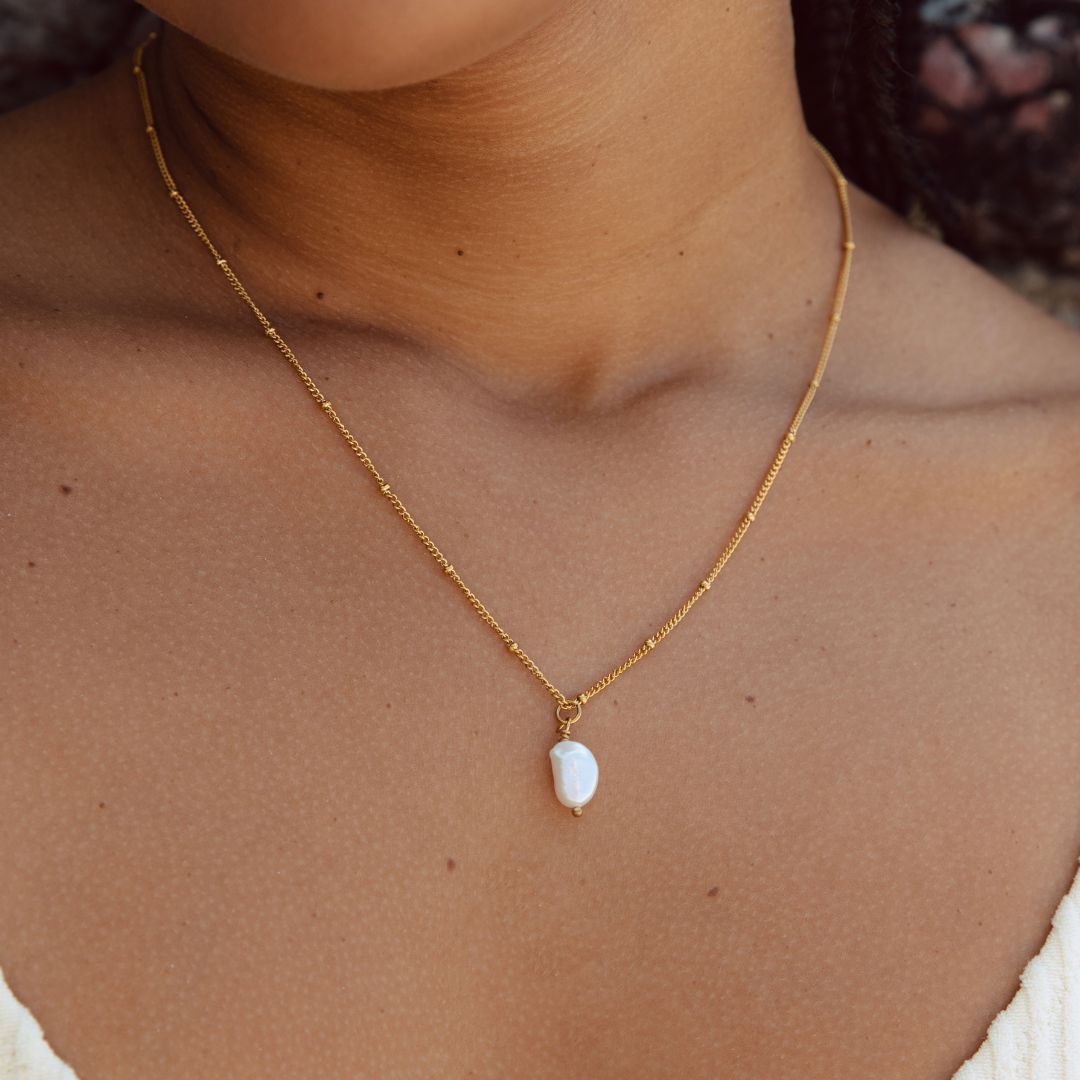


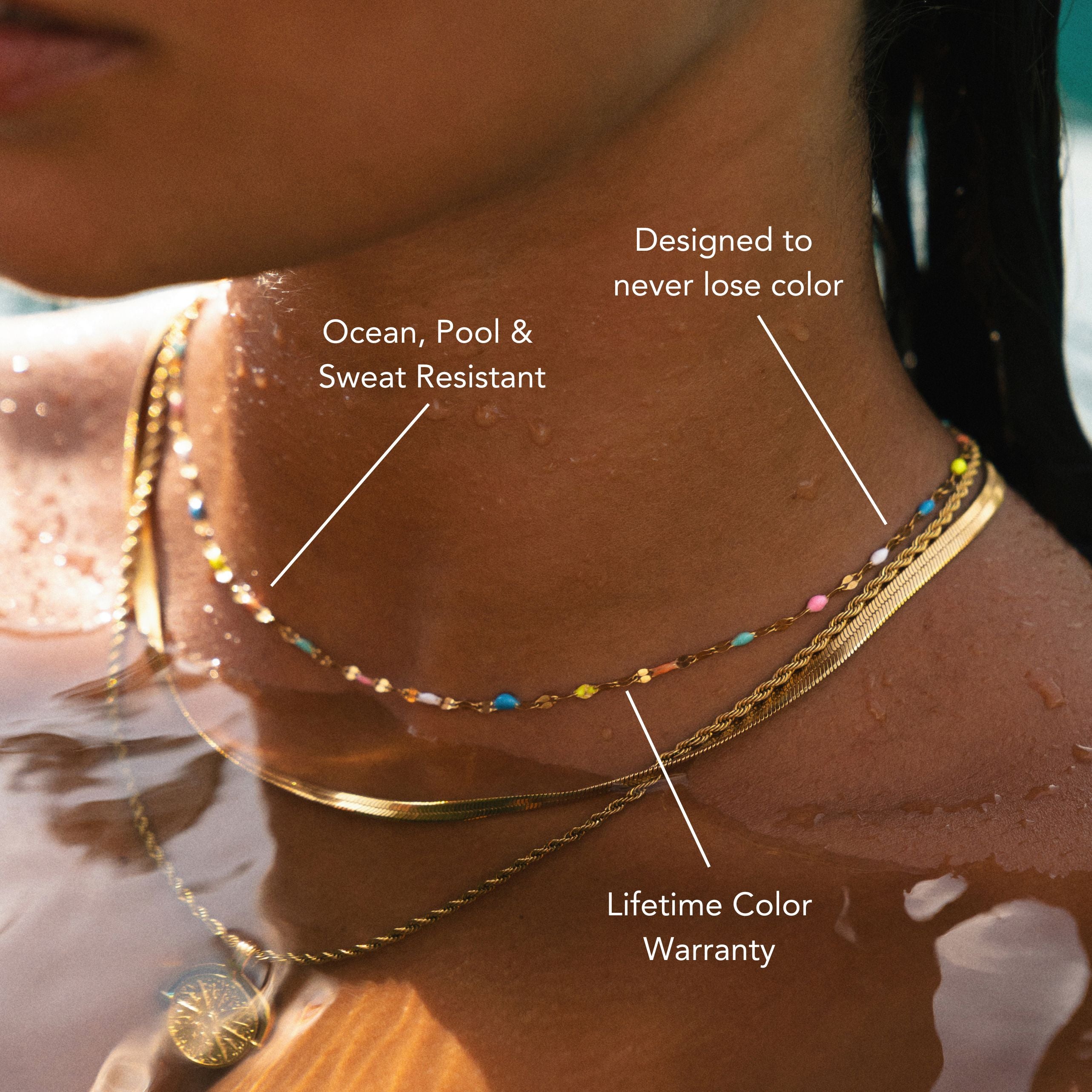






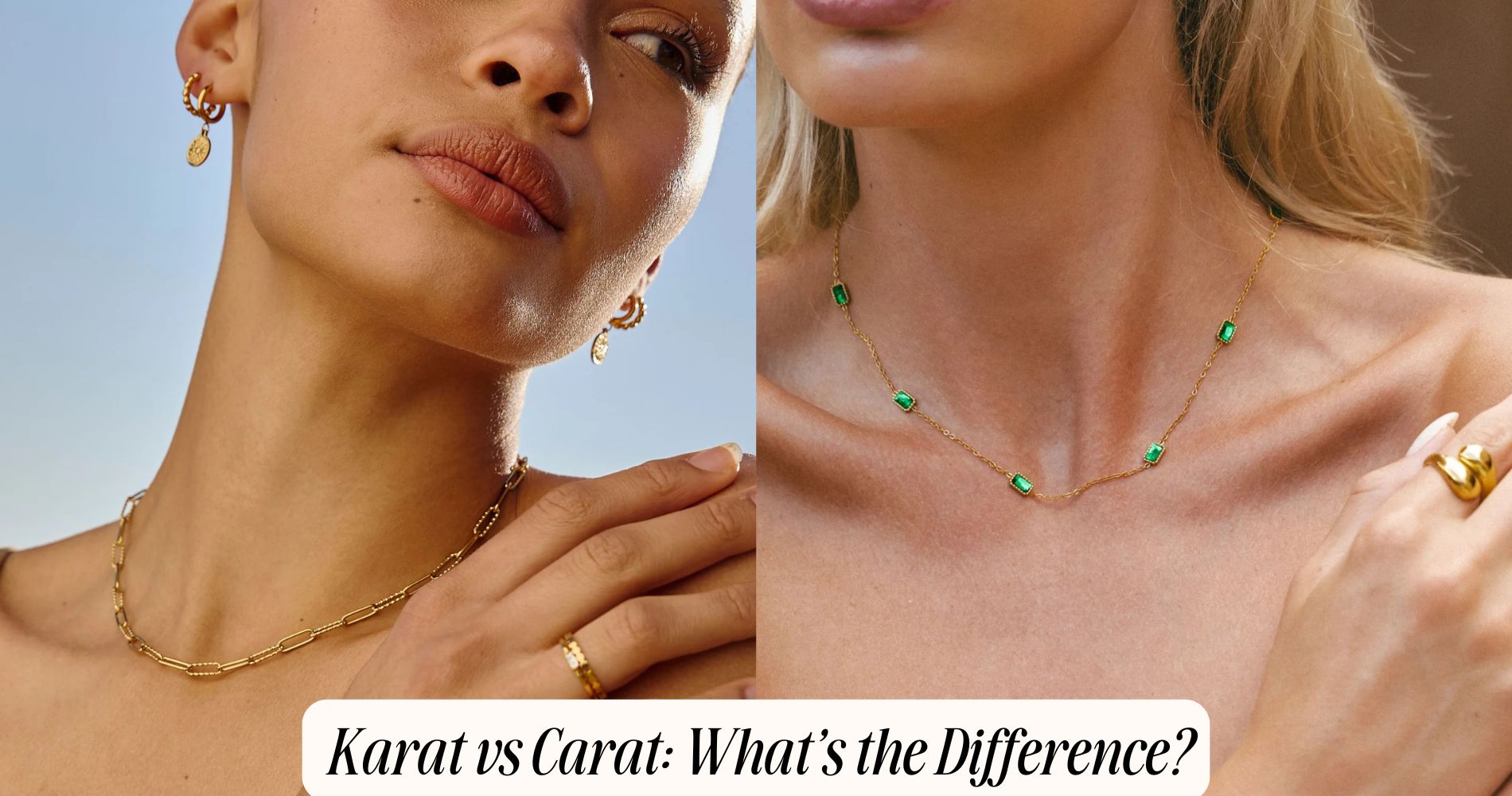
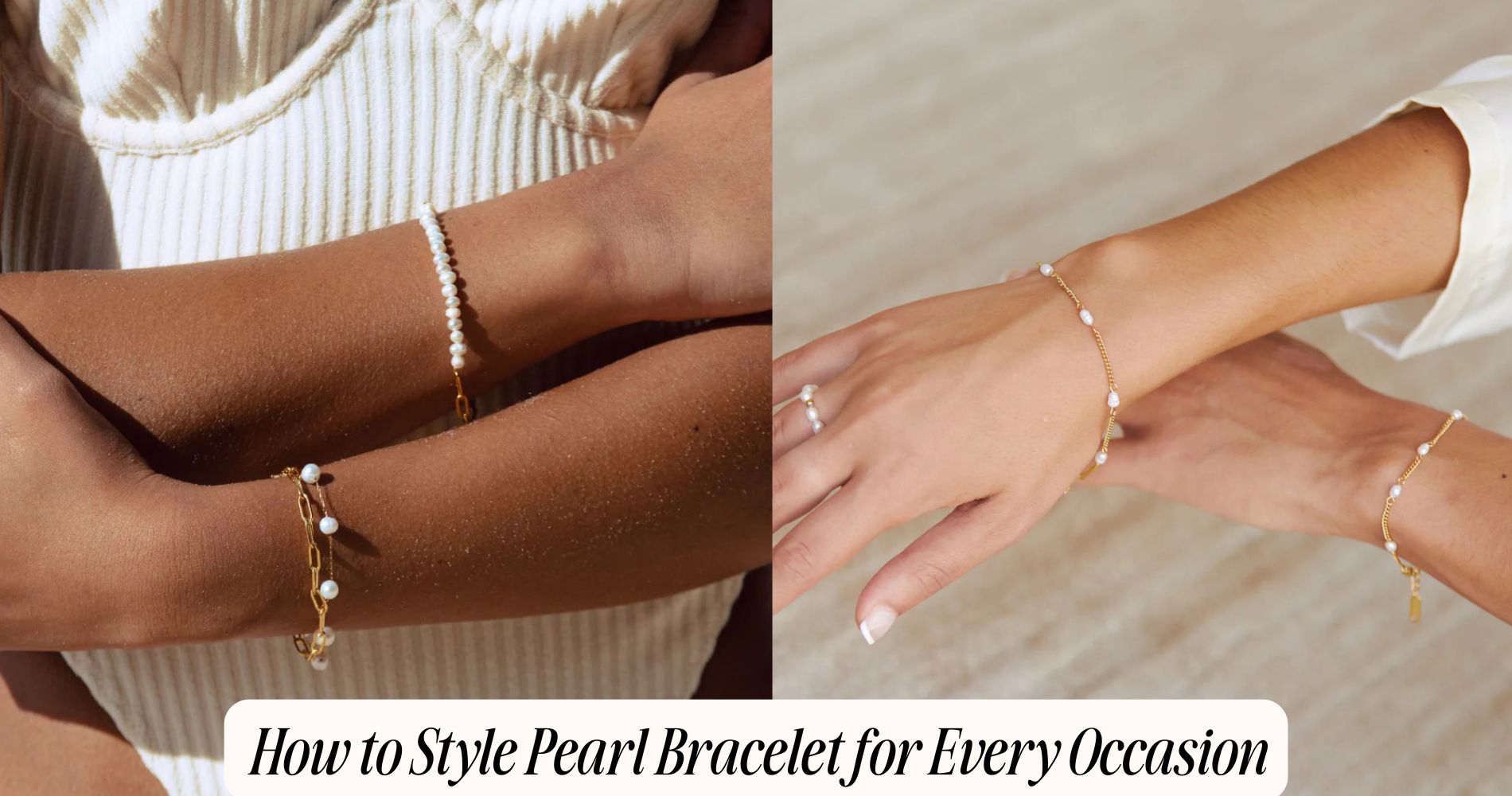




Leave a comment
This site is protected by hCaptcha and the hCaptcha Privacy Policy and Terms of Service apply.